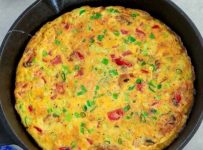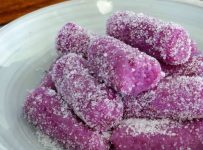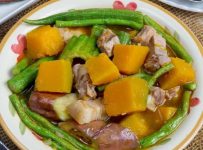Kwek-kwek is made of quail eggs coated with an orange batter and deep-fried to golden perfection. This popular Filipino street food is fun to eat and delicious with spicy vinegar or a special dipping sauce.
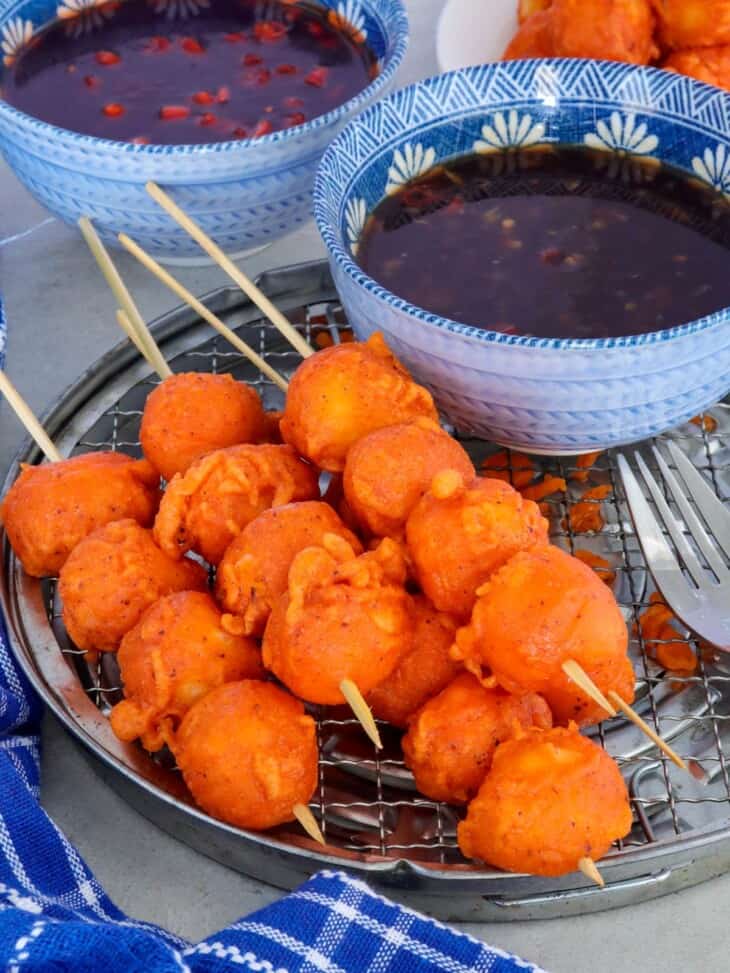
I posted my version of these battered quail eggs in 2013, but I learned a new (and better) way to make them during one of my trips to the Philippines.
I went on a street food spree with a couple of friends in our city downtown, and we had our fill of fish balls, inihaw pork ears, adidas, and of course, tokneneng and kwek-kwek. I am not sure if it was because of the thrill of eating food on the street, but everything we ate was fantastic!
Fortunately, the vendor was easy to bribe with kind words. I said the kwek-kwek was the best I had ever tasted, and she eagerly parted with her trade secrets, which I happily took notes of. 🙂
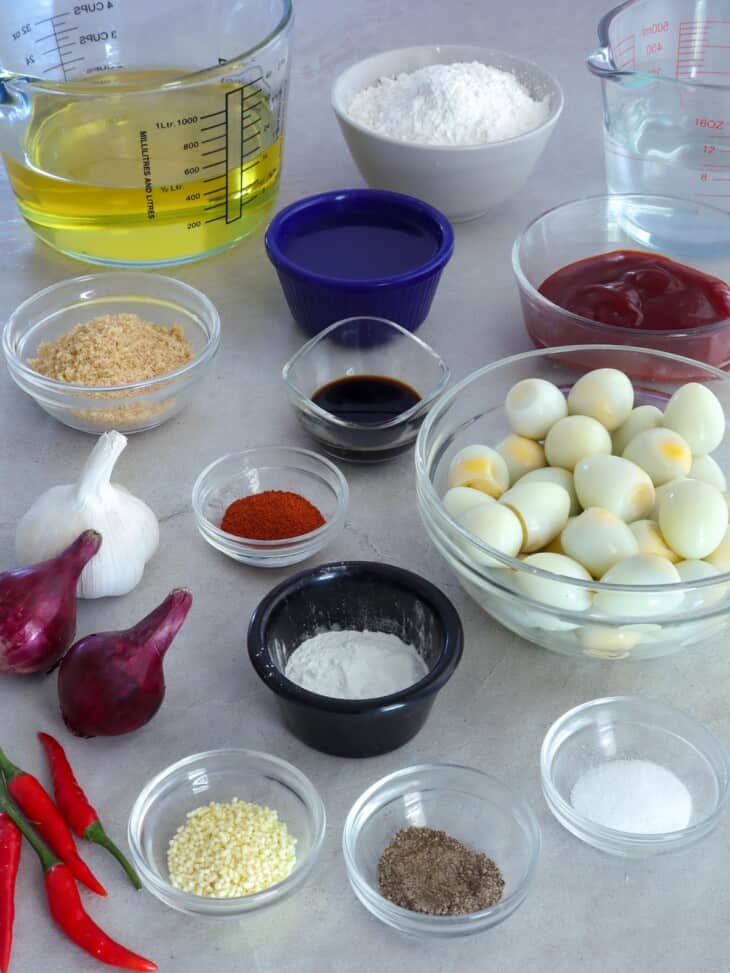
Ingredient notes
- My previous recipe was a little more elaborate, with baking powder and beaten eggs added to the batter, atsuete powder for color, chicken base, salt, and pepper for flavor. This version below that I learned from the vendor only has flour, water, salt, pepper, orange food coloring, and one key ingredient–> MAGIC SARAP!
- Orange food coloring is traditionally used to give the kwek-kwek its characteristic hue. Feel free to substitute atsuete powder if you prefer a natural color enhancer.
- Since the quail eggs are the star of the show here, please check out the tips below on how to cook hard-boiled eggs and how to easily peel them. If you want to save yourself a few minutes of prep time, feel free to use canned quail eggs available at most Asian supermarkets.
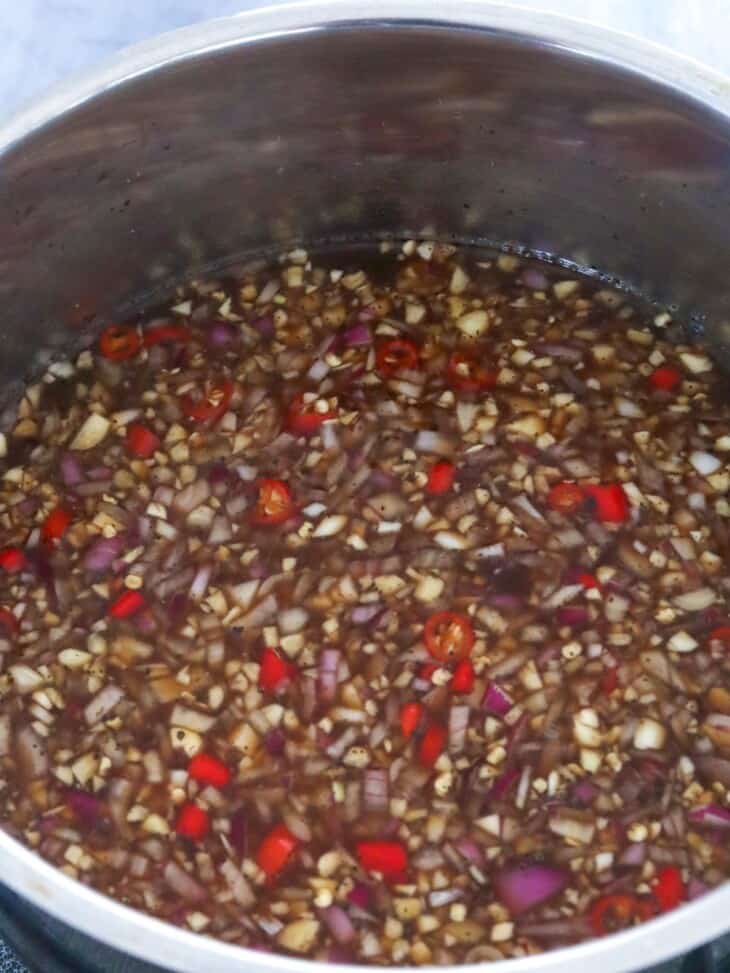
Cooking quail eggs
Since these minute eggs are the star of the show, it’s important to prepare them properly.
- In a saucepan over medium heat, bring enough water to cover the eggs about one inch to a full boil.
- Gently lower the eggs into the water using a ladle or large spoon.
- Cook for about 3 to 4 minutes.
- Remove the eggs using a slotted spoon and transfer them to a bowl of iced water. Allow to cool.
- Gently tap the eggs on a hard surface to crack the shell and return to the ice bath for about 1 minute.
- Peel away the membrane between the egg and shell. Rinse to remove any stray bits of shell.
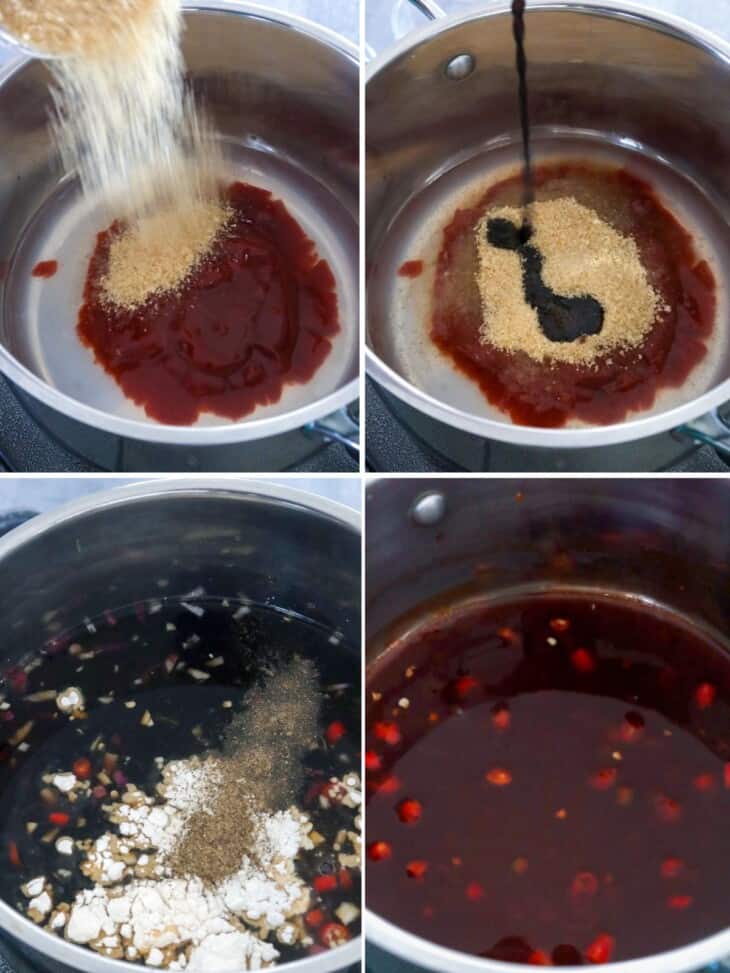
The batter
- The wet mixture should be thick but flow like a pancake batter.
- I find 1 cup of water to 1 cup of flour to be the perfect ratio. Add the water to the flour mixture slowly, whisking vigorously as you pour.
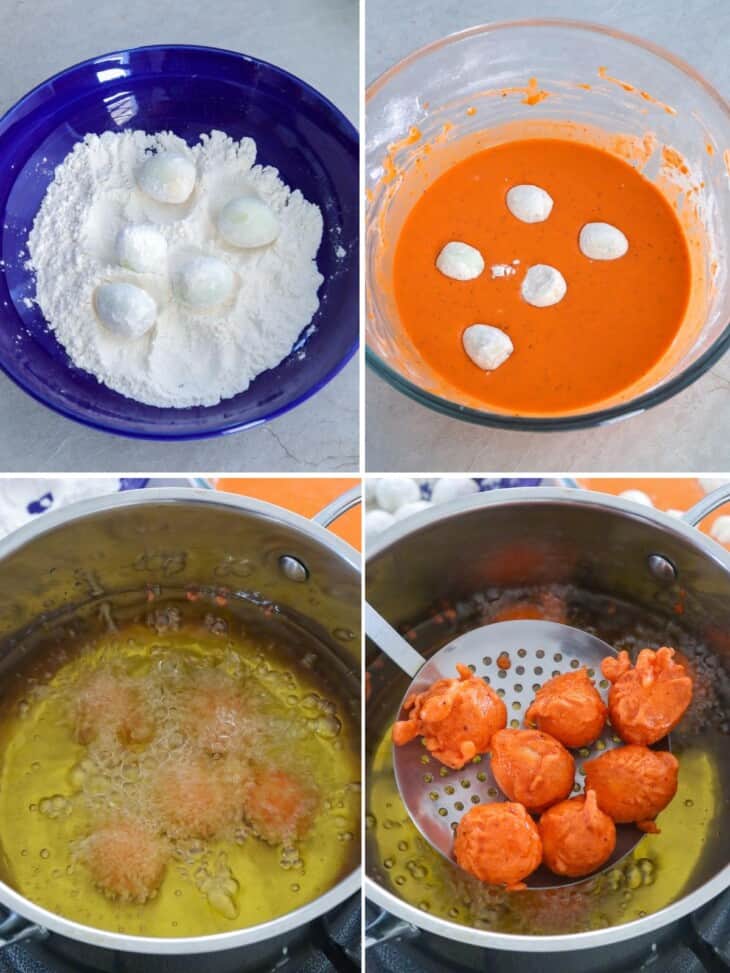
Frying the battered quail eggs
- The battered eggs are best when deep-fried; make sure the amount of oil is deep enough to cover the eggs fully during frying.
- Check your oil temperature and maintain it at the optimal 350 to 375 F range. Too hot, the batter will burn before sufficiently cooked; too low, the eggs absorb much more grease.
- Do not overcrowd the pan to keep the temperature from plummeting. Fry in batches as needed, and make sure to bring the temperature back to 350 F before adding the next round.
- Don’t drain the fried eggs on paper towels, as the escaping steam will make the breading soggy. Drain on a wire rack set over a baking sheet for the best texture to catch oil drips.
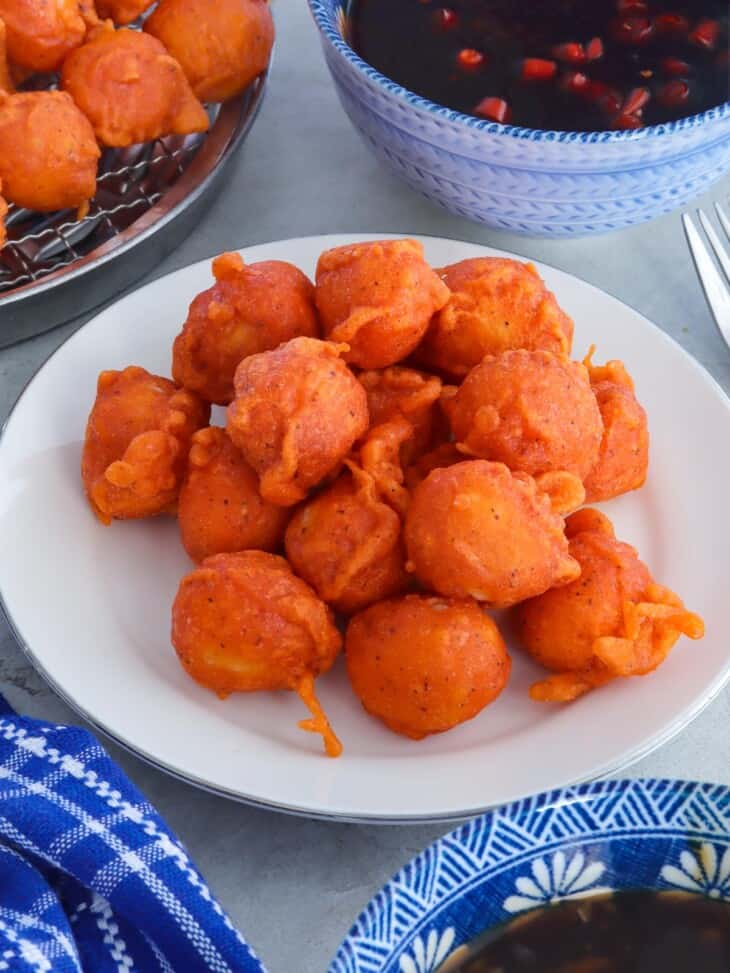
How to serve
The orange-battered quail eggs are traditionally skewered in bamboo sticks, making serving and dipping in the sauce easier. They’re fun to eat and taste extra delicious, dipped in spicy vinegar or sweet and spicy fishball sauce. Choose your favorite dipping sauce below!
Spicy vinegar dip
- In a saucepan over medium heat, combine 1/2 cup vinegar, 1/2 cup ketchup, 1/2 cup brown sugar, 1/4 cup soy sauce, and 1 tablespoon chopped chili peppers.
- Over medium heat, stirring occasionally, bring to a simmer, and cook for about 3 to 5 minutes or until sugar is dissolved.
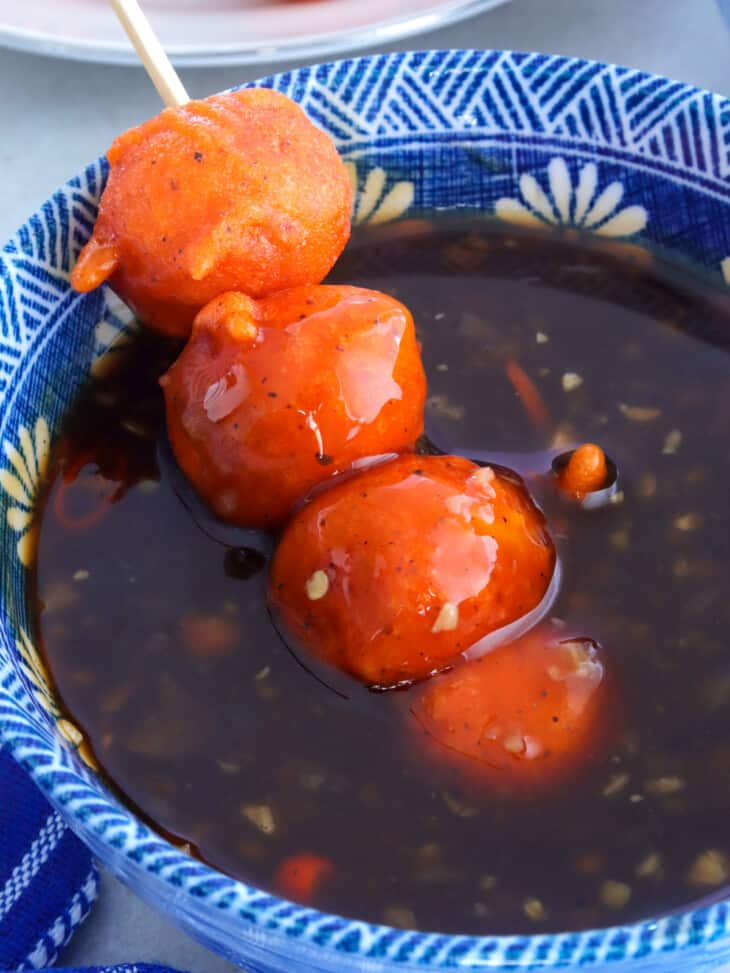
Sweet and sour Manong’s special sauce
- In a saucepan, combine 2 cups water, 1/2 cup soy sauce, 1 cup brown sugar, 1/4 cup fresh minced garlic, 1/4 cup finely chopped shallots, 1 tablespoon chopped chili pepper, 1 tablespoon flour, 1 tablespoon cornstarch, 1 teaspoon salt, and 1/2 teaspoon pepper. Stir well until well blended and free of lumps.
- Over medium heat, bring to a boil, stirring regularly, for about 3 to 5 minutes or until thickened. The sauce will thicken more as it cools.
- Transfer to an airtight container and use it as a dipping sauce.

Storage instructions
- Like most fried foods, Kwek-kwek is best enjoyed freshly cooked as the breading tends to soften over time and become overly greasy when cold.
- I suggest storing the eggs and batter in individual containers and frying them when ready to serve. The hard-boiled eggs can be stored unpeeled in the refrigerator for up to 7 days. The batter can be stored for up to 5 hours.
